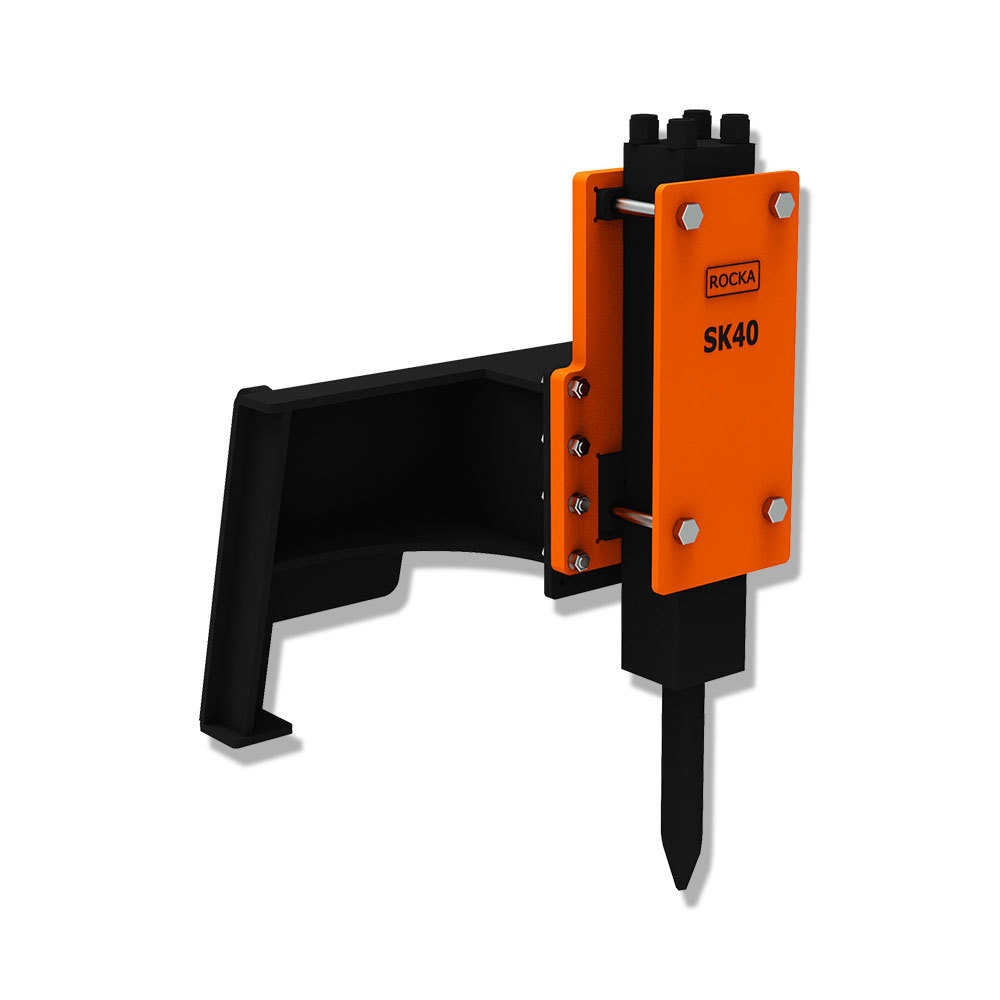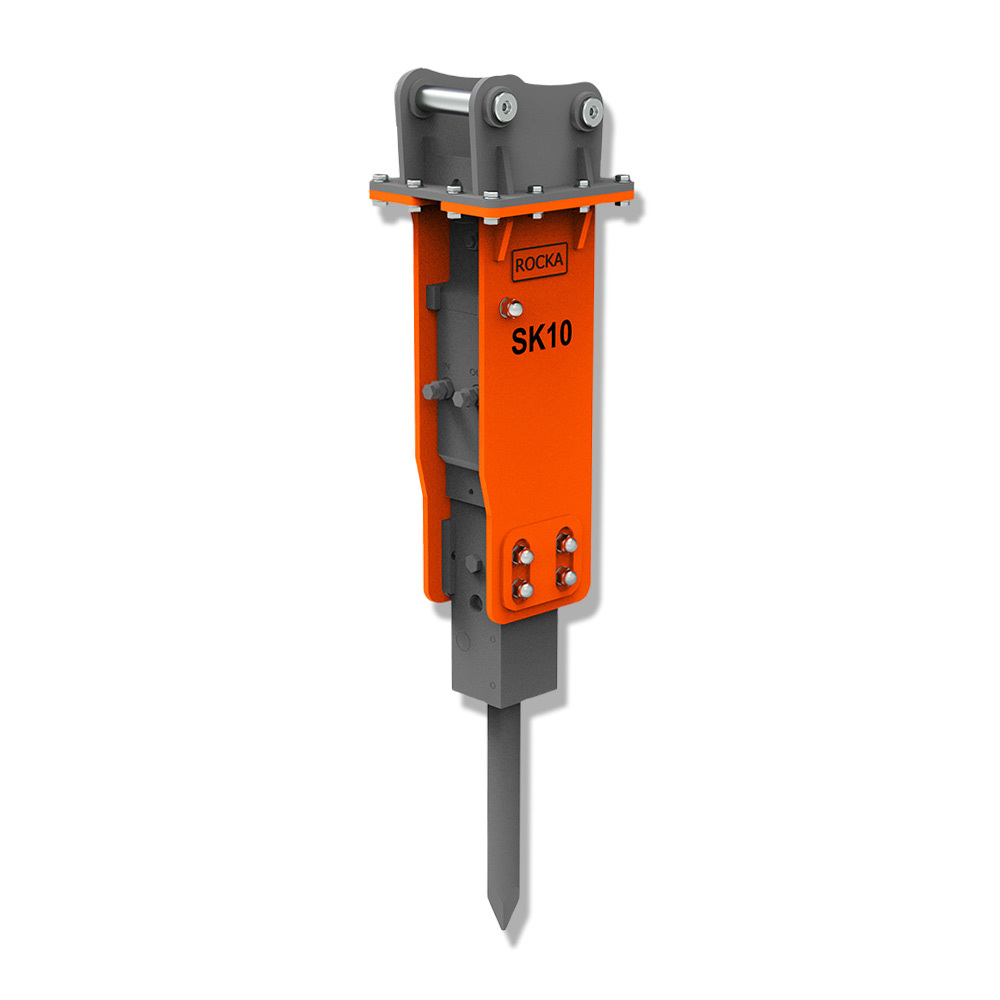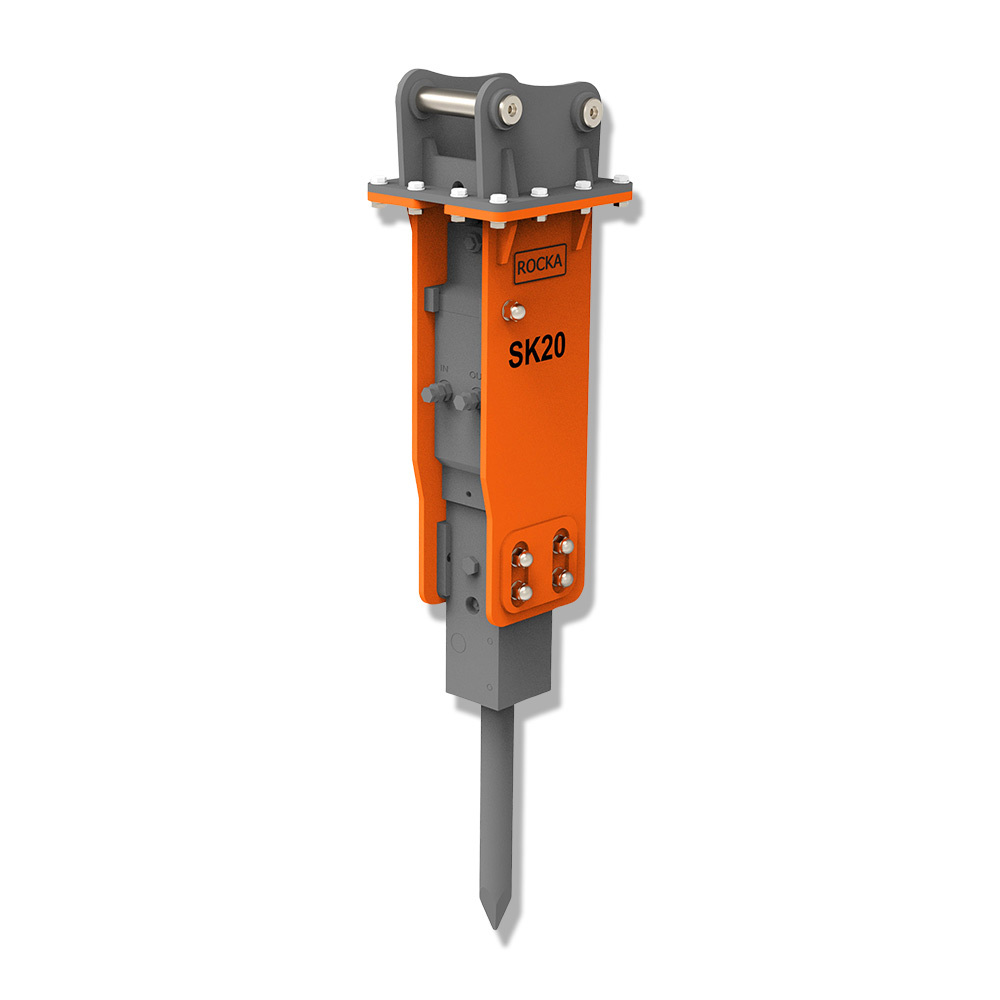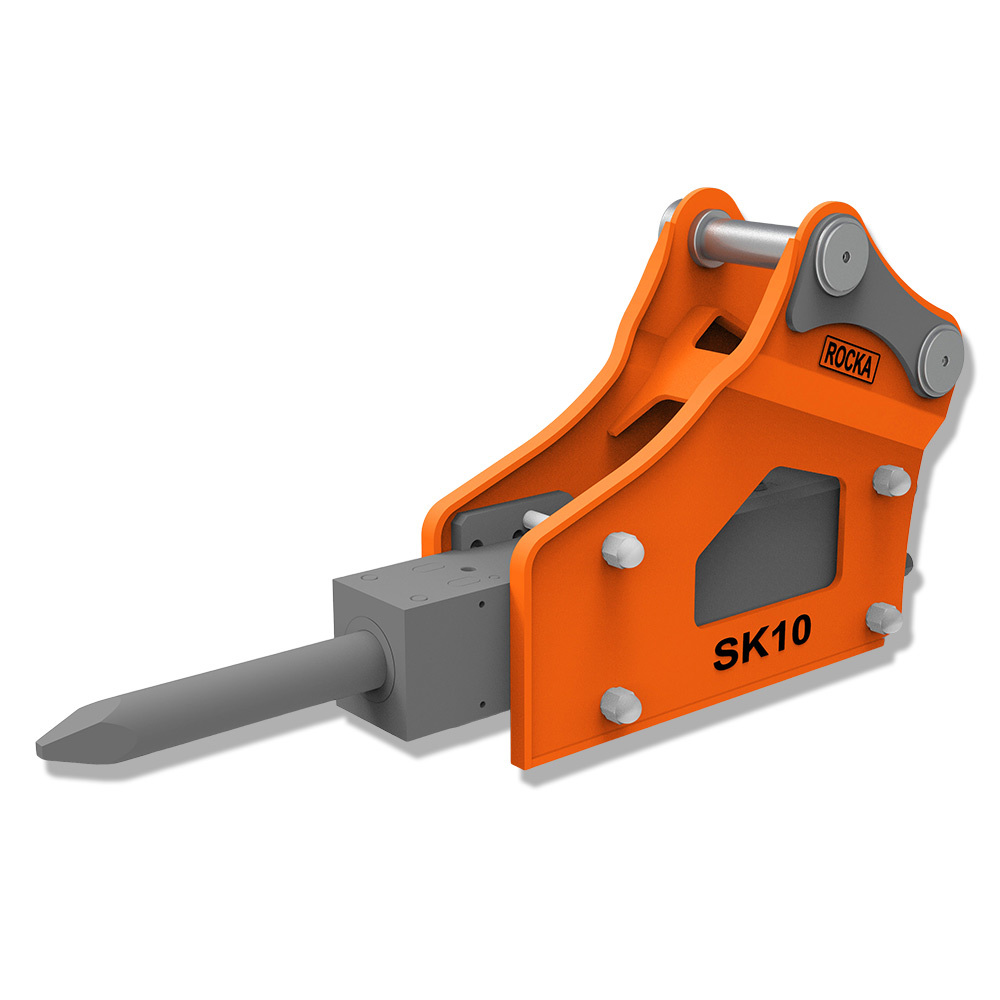Product Series


SK30
Specializing in high-quality attachments like the ROCKA hydraulic breaker, quick hitch coupler, vibratory plate compactor, ripper, and hydraulic post drivers, Rocka offers products engineered for durability and performance.
- Commodity name: SK30
Product Description
|
Suitable Excavator |
ton |
2.4~4.5 |
|
|
Operating Weight |
kg |
168 |
|
|
Impact Energy Class |
ft/lbs |
450 |
|
|
Impact Rate |
bpm |
600~1100 |
|
|
Required Oil Flow |
l/mim |
25~50 |
|
|
Setting Pressure |
bar |
150 |
|
|
psi |
2134 |
||
|
Operating Pressure |
bar |
90~120 |
|
|
psi |
1280~1707 |
||
|
Hose Diameter |
in. |
1/2 |
|
|
Tool(Chisel) Diameter |
in. |
2.1 |
|
|
mm |
53 |
||
SK30 hydraulic breaker for Skid Steer
What Is a Skid Steer Hydraulic Breaker?
A skid steer hydraulic breaker is a powerful attachment designed to demolish tough materials like concrete, asphalt, and rock. It works by using the skid steer’s hydraulic system to drive a piston that delivers high-impact blows. Commonly used in construction, demolition, and excavation, hydraulic breakers make it easy to break through hard surfaces quickly and efficiently.
How to Install a Hydraulic Breaker on a Skid Steer
Installing a hydraulic breaker on your skid steer loader is a straightforward process:
- Mount the Attachment – Use your skid steer’s quick-attach system to secure the breaker. If it doesn’t use a quick-attach, manually align the mounting points and lock it in place with pins or bolts.
- Connect the Hydraulic Hoses – Attach the hydraulic hoses from the breaker to the auxiliary couplers on your skid steer. Make sure all fittings are clean, tight, and properly aligned.
- Test Before Use – Start your machine and activate the hydraulic flow to test the breaker. Listen for unusual sounds and check for smooth operation. If needed, make any pressure or flow adjustments recommended by the breaker manufacturer.
How to Choose the Right Skid Steer Hydraulic Breaker
Selecting the right breaker for your skid steer involves several key factors:
- Machine Compatibility – Check that the breaker fits your skid steer’s mounting system and matches its hydraulic flow and pressure specifications.
- Breaker Size – Choose a breaker with the right impact energy for the type of material you'll be working with. Heavier-duty jobs require larger, more powerful breakers.
- Working Environment – Consider noise levels, jobsite conditions, and the type of material you’ll be breaking.
Always consult your equipment manual or speak with a specialist to ensure compatibility and performance.
Maintenance Tips for Skid Steer Hydraulic Breakers
Keeping your hydraulic breaker in top condition helps extend its lifespan and ensures safe, reliable operation:
- Inspect Regularly – Check the tool body, chisel, and bushings for wear or cracks. Replace damaged parts immediately.
- Lubricate Moving Parts – Proper greasing is essential to prevent metal-on-metal wear.
- Keep It Clean – After use, remove dirt and debris from the attachment to prevent buildup and potential damage.
- Monitor Hydraulic System – Check fluid levels regularly and inspect for leaks or hose damage. Ensure pressure settings are within the recommended range.
Routine care not only boosts performance but also reduces repair costs in the long run.





